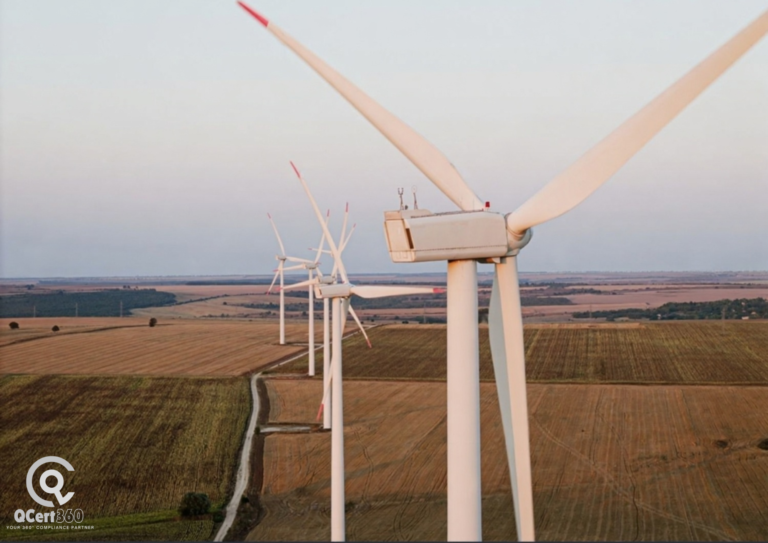
When most people think about reducing carbon emissions in manufacturing, they picture solar panels, electric forklifts, or energy-efficient lighting. And while those things matter, they often overlook one of the biggest hidden opportunities: quality control.
Here’s the thing—every defective product, wasted raw material, or rework order adds up. Not just in cost, but in carbon. Poor quality doesn’t just hurt your margins—it damages the planet.
The good news? Tightening up your quality processes can do both: cut waste and reduce your carbon footprint. And companies that get this right are not just doing good for the environment—they’re becoming more efficient, more competitive, and more trusted by customers.
Let’s break this down and look at how it works in the real world.
What’s the Connection Between Quality and Carbon?
Quality control isn’t just about catching defects. It’s about doing things right the first time. That means:
- Fewer scrapped products
- Less rework
- More efficient use of energy, materials, and time
- Fewer returns and replacements
All of this directly impacts your carbon footprint. Every time a product needs to be remade or shipped back and forth, you’re burning fuel, using energy, and creating waste.
So, if you’re serious about sustainability, it’s not just about your energy sources—it’s about your production precision.
The Hidden Carbon Cost of Poor Quality
Imagine you manufacture 100,000 components a month. If 5% of them fail inspection and require rework, that’s 5,000 extra parts you didn’t need to make—each using electricity, machines, labor, packaging, and possibly logistics.
That adds up:
- More raw materials sourced and transported
- More energy used in machinery
- More emissions from delivery and returns
- More waste, especially if parts can’t be reused
And here’s the kicker: most manufacturers track cost of poor quality (CoPQ), but very few connect it to carbon output. It’s time to change that.
Real-World Example: Toyota’s Zero Defect Push
Toyota is a classic example of a company that has linked quality with sustainability. Their famous Toyota Production System (TPS) isn’t just about efficiency—it’s about eliminating all forms of waste, including environmental.
Toyota realized early on that poor quality leads to wasted resources. Over the years, they’ve invested heavily in:
- Preventive maintenance to avoid process errors
- Lean manufacturing methods to reduce overproduction
- Real-time defect tracking to stop errors at the source
As a result, Toyota has seen a measurable drop in both defect rates and carbon emissions per unit produced.
For example, at their Burnaston plant in the UK, they integrated energy monitoring directly into quality checkpoints. So, if a machine started drawing more energy than expected, it triggered a process review. Often, it was due to worn tooling or a creeping defect—allowing the team to fix the root issue early.
This tight integration between quality systems and environmental monitoring helped them reduce energy waste by over 30% in key production lines.
The lesson? You don’t have to choose between efficiency and sustainability. The best manufacturers are doing both—because they’re connected.
How You Can Use Quality to Cut Carbon
If you’re in manufacturing and looking to reduce your environmental impact, start with these quality-driven steps:
- Track Rework and Scrap – Then Calculate the Carbon Cost
Every time a part is scrapped or reworked, log it. Then estimate the energy and materials used. This gives you a rough idea of the carbon footprint from quality issues alone.
- Invest in Root Cause Analysis
Don’t just patch the problem. Fix the system. Use tools like 5 Whys or Fishbone Diagrams to get to the root and prevent defects from recurring.
If you’re already certified in ISO 9001 (Quality) or ISO 14001 (Environment), consider combining them. This allows for shared audits, unified risk management, and better decision-making.
- Train Teams on the Link Between Quality and Sustainability
When people see how a small defect can lead to extra emissions, they care more. Build this mindset into your quality culture.
- Monitor Process Efficiency
Machines that are out of spec waste both energy and materials. Use data to flag process drift early—before it affects product quality or energy use.
Good quality is sustainable quality.
You don’t need a massive green energy budget to start cutting emissions. Sometimes, the biggest gains come from areas that have nothing to do with solar panels—and everything to do with how well you build things.
By focusing on doing things right the first time, you cut down on waste, save money, and reduce your carbon footprint at the same time. In today’s world, that’s not just smart—it’s essential.
If you’re looking to upgrade your quality systems or integrate them with environmental goals, QCert360 can help. We specialize in ISO certifications and real-world improvement strategies that actually stick. Reach us at contact@qcert360.com or call +91 7483870406.
FAQ's
1. How does quality control reduce carbon footprint in manufacturing?
Improved quality control minimizes defects and waste, leading to less resource consumption and lower emissions throughout production.
2. What quality control methods help cut carbon emissions?
Methods like Six Sigma, Total Quality Management (TQM), and Statistical Process Control (SPC) optimize processes and reduce energy use and material waste.
3. Can better quality control improve sustainability certifications?
Yes. Effective quality control supports compliance with ISO 14001 and other environmental management standards that emphasize carbon footprint reduction.
4. What role does data play in reducing carbon footprint through quality control?
Data-driven quality control identifies inefficiencies and areas of high energy use, enabling targeted improvements and continuous environmental performance gains.
5. Is reducing carbon footprint through quality control cost-effective?
Yes. By cutting waste and energy consumption, manufacturers save money while meeting environmental goals, creating a win-win scenario.
6. How do manufacturers measure carbon footprint reductions from quality improvements?
Through lifecycle assessments, energy audits, and tracking key performance indicators related to resource usage and emissions.
7. Can ISO 9001 certification support carbon footprint reduction efforts?
Yes. ISO 9001’s focus on process improvement and customer satisfaction aligns well with sustainability initiatives that reduce environmental impact.
8. How does supplier quality affect a company’s carbon footprint?
Poor supplier quality can lead to rework, returns, and waste, increasing the overall carbon footprint of the supply chain.
9. What challenges do manufacturers face when linking quality control to carbon reduction?
Challenges include data collection complexity, integrating sustainability metrics, and balancing cost with environmental goals.
10. How can QCert360 assist manufacturers in reducing carbon footprint through quality control?
QCert360 provides expert guidance on quality management systems, sustainability integration, and certification to help manufacturers lower emissions effectively.


